Live Justin Chance Tara Downs March 17 - April 29, 2023
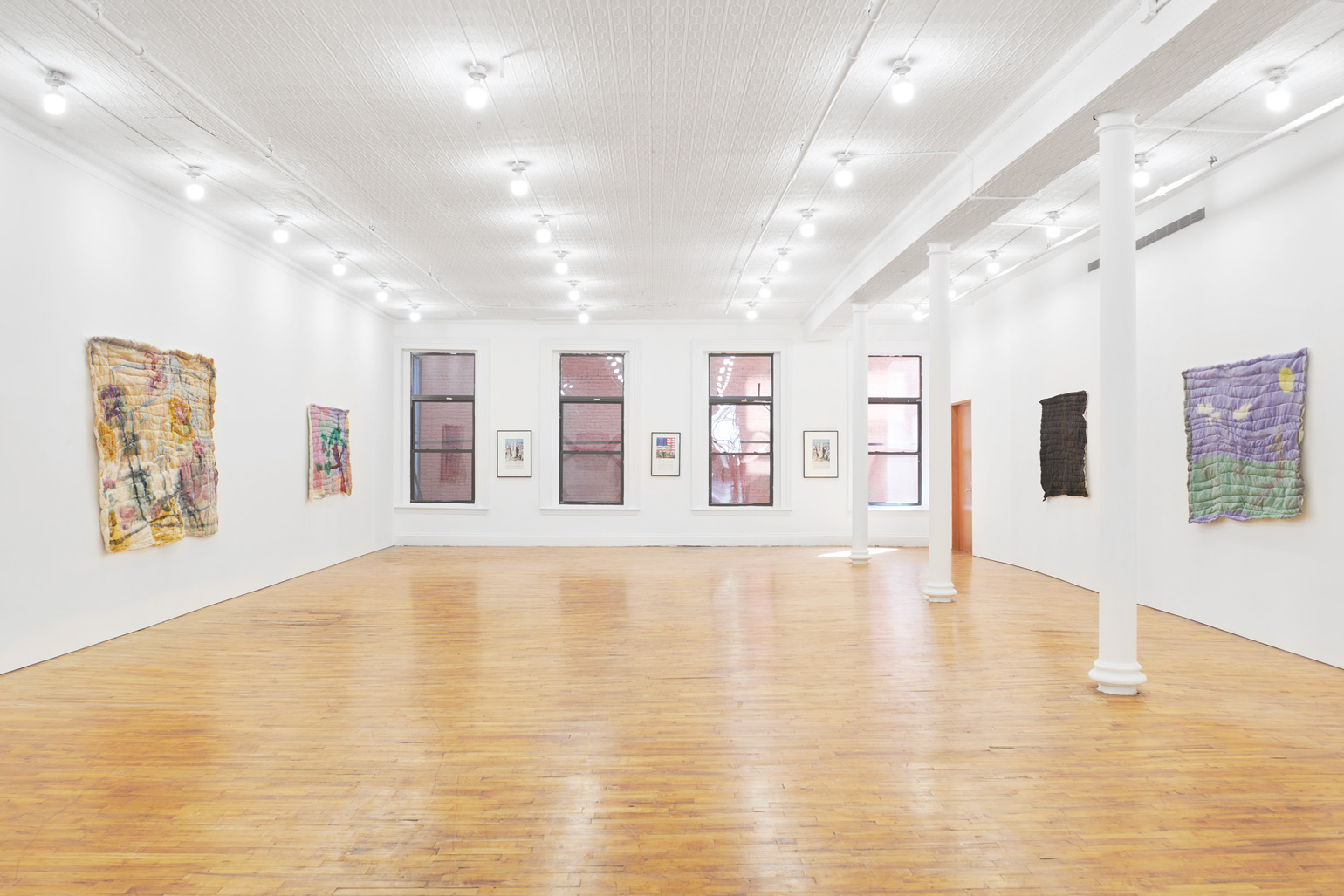
Installation view of “Live”. All images courtesy of Tara Downs, New York.
Perhaps one of the most overlooked aspects of the quilt as an artform is its utility as a technology for keeping warm. This oversight is prevalent in surveys of historic quilts that take for granted the use of the blankets within the community they’ve come to represent—even more so when the quilts on display were created solely as art objects. Without the possibility of contact with a living body, a quilt might easily be reduced to a disenchanted form; a symbol for itself. This is not the case in the work of Justin Chance.
For his first solo exhibition at Tara Downs, Chance is showing eight new quilts alongside a set of found World Trade Center–themed calendars from the year 2002. Each calendar contains images of the Twin Towers, with no indication of the disastrous events that ended their existence the previous year. It’s hard to look at these relics without also seeing the rescinded futures they’ve come to represent. The quilts on the other hand are relatively new—they were all completed within the past year. They’ve never been slept under, or stored away for a summer. They’ve not had—and perhaps never will have—the opportunity to experience their own non-theoretical blankethood.
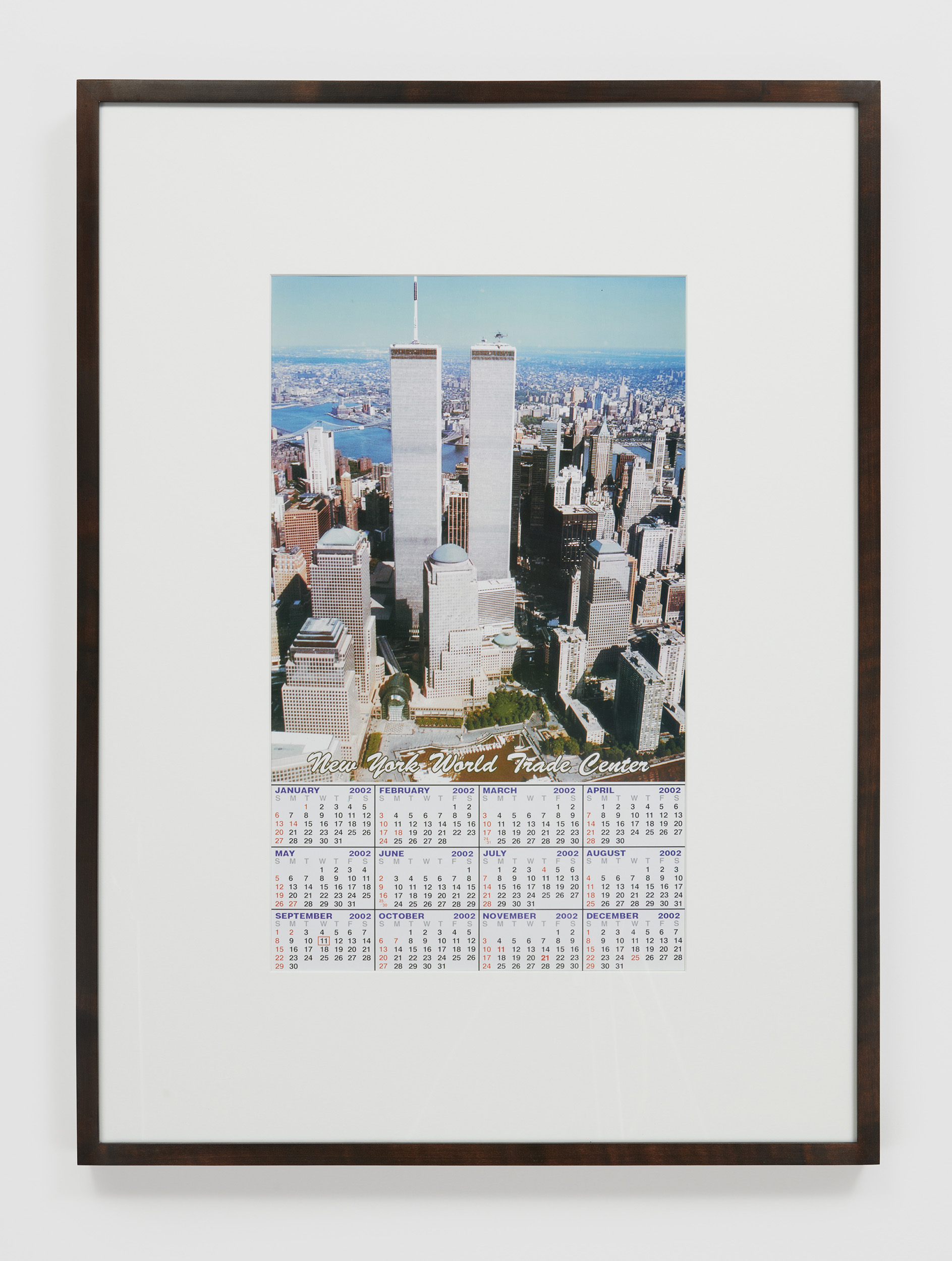
Planner, 2021–2023.
Separated from the possibility of use, the quilts resemble the calendars, which as tools for organizing a bygone year and as somewhat misleading historical artifacts, evoke their own fruitless chronologies. The decision to show these two sets of objects together can be understood as a subtle directive for us to consider the impotency of projected time while moving though this exhibition. This dynamic is also suggested by its title: “Live”. Forget the past. There is no future. Chance is asking us to embrace the eternal flow of the present moment.
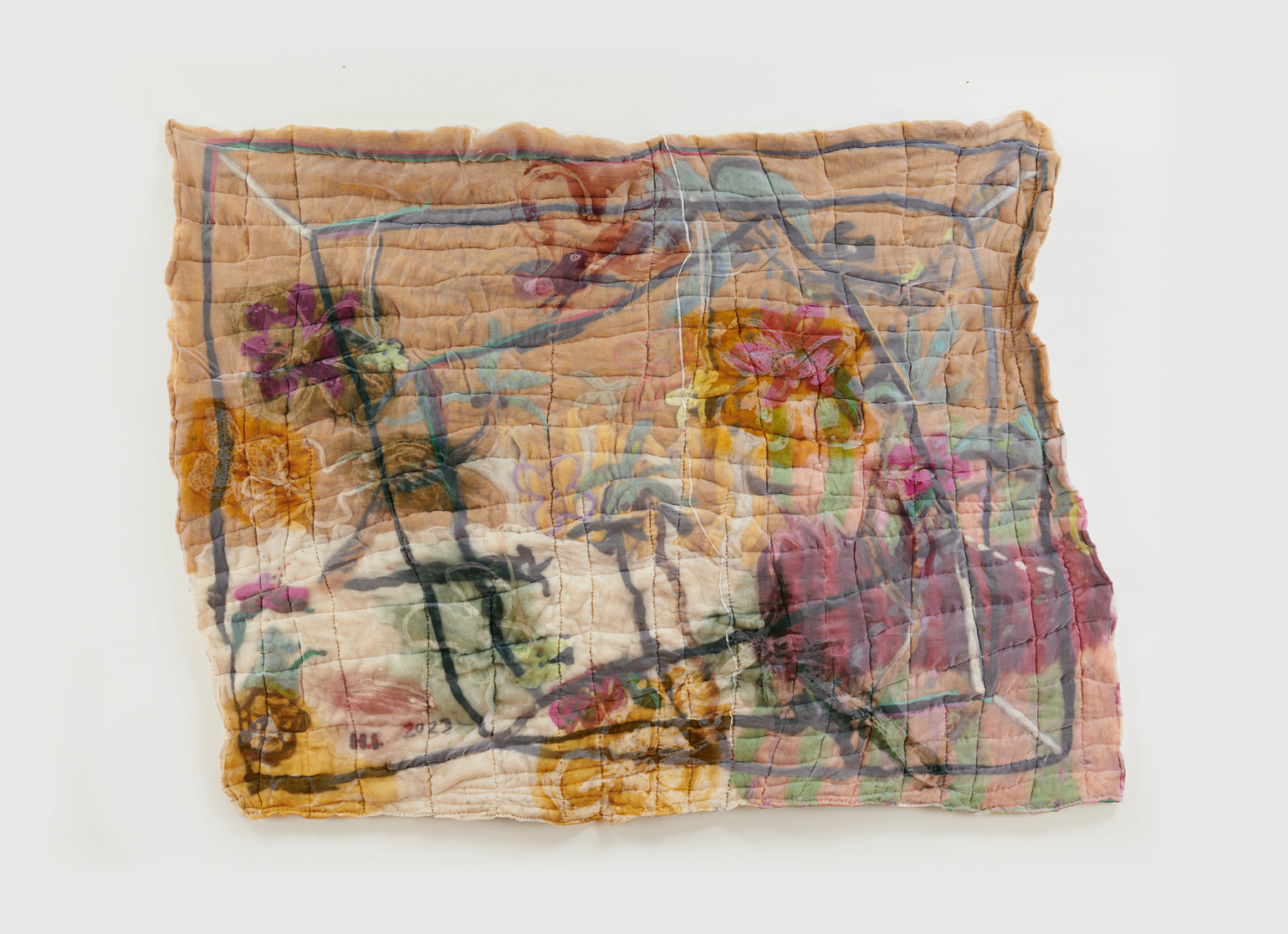
Aloha Sadness, 2022–2023.
I remember being enlisted, along with my entire elementary school, to make a small collective contribution to the AIDS Memorial Quilt. It was here that I was first introduced to the notion that, in the absence of a body, a quilt could become analogous to the body itself. Whereas the AIDS Memorial Quilt is a collaborative patchwork that coheres the multiple subjective experiences of its makers into a singular vessel of shared catharsis, Chance’s quilts are produced solely by the artist himself. And whatever transference they permit is born somewhere between his psyche and ours. Their stitching is mad-scientist mania meets Gee’s Bend, invoking immediacy rather than the enduring tedium associated with fiber craft. What most quilts are to the past, Chance’s quilts are to the moment you look at them.
This immediacy is underpinned by Chance’s unconventional approach to other aspects of his craft as well. By collaging dyed wool felts to create his imagery, or in some cases lack thereof, and encasing the compositions in translucent white silk, Chance turns the traditional form of the quilt inside out. This is my favorite detail of the work. To look at these quilts, is also to look through them. Chance grants the viewer an almost omniscient point of view, as the core of each quilt comes to define its surface.
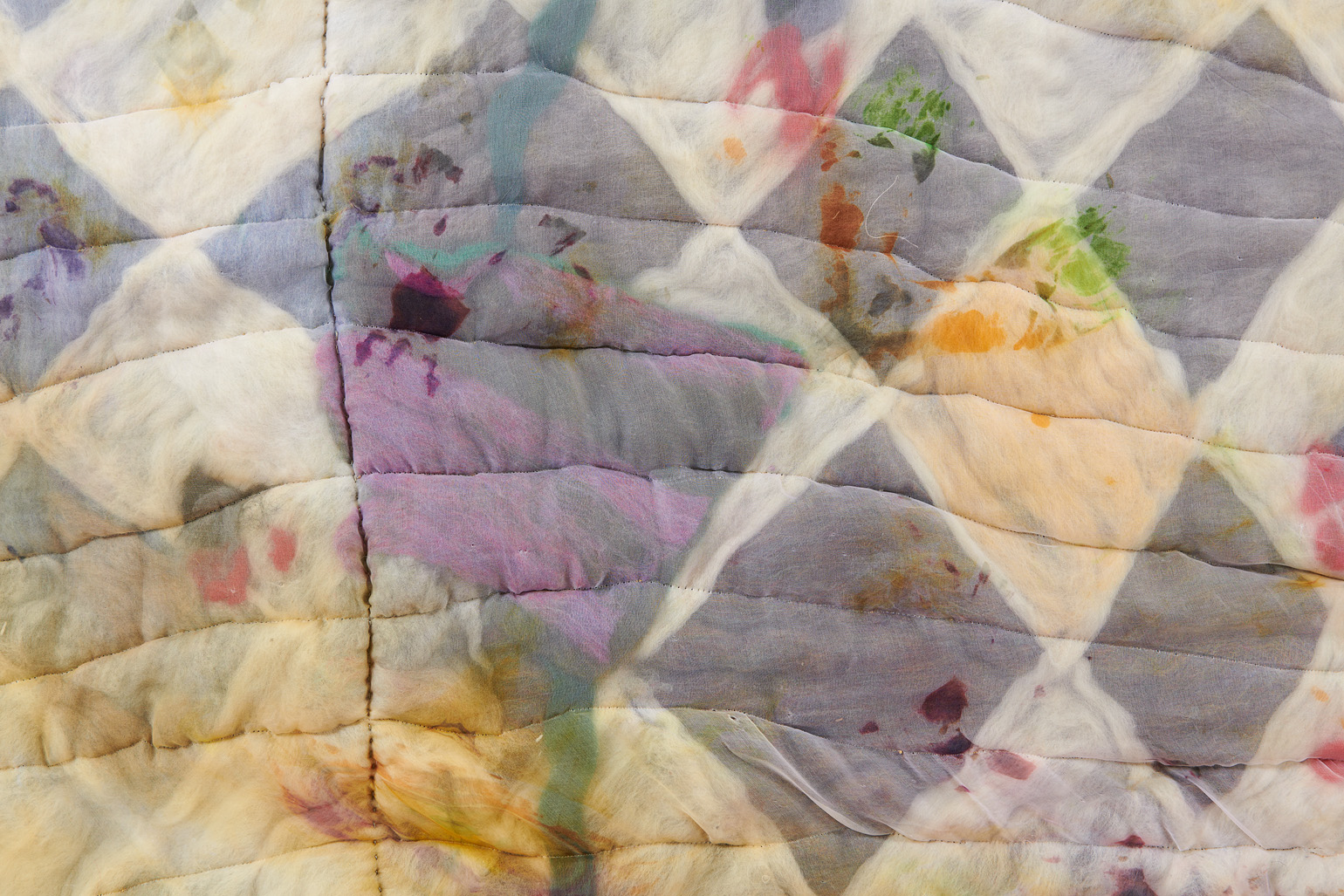
Detail of A Good Man Is Hard To Find (1953), 2023.
In some instances Chance has also dyed areas of the quilts’ outer shells. Take for example Depression (2023). Here an additional layer of color creates a contrast that helps to articulate atmospheric depth throughout a droopy tropical landscape. Within the representational space of the work, the cloudy white silk is transformed into a thick layer of fog. Given the material’s reputation as light and permeable, Chance’s use of silk to describe the opacity and weight of the emotional state for which the work is titled is as impressive as it is ridiculous. He seems to be aware of the comedy present in this paradox and is even gracious enough to let us in on the joke. Deep within the image, rendered in felt, a small black bird perched atop the highest tree sits ready to deliver an efficacious dose of well-timed side eye to those who discover it.
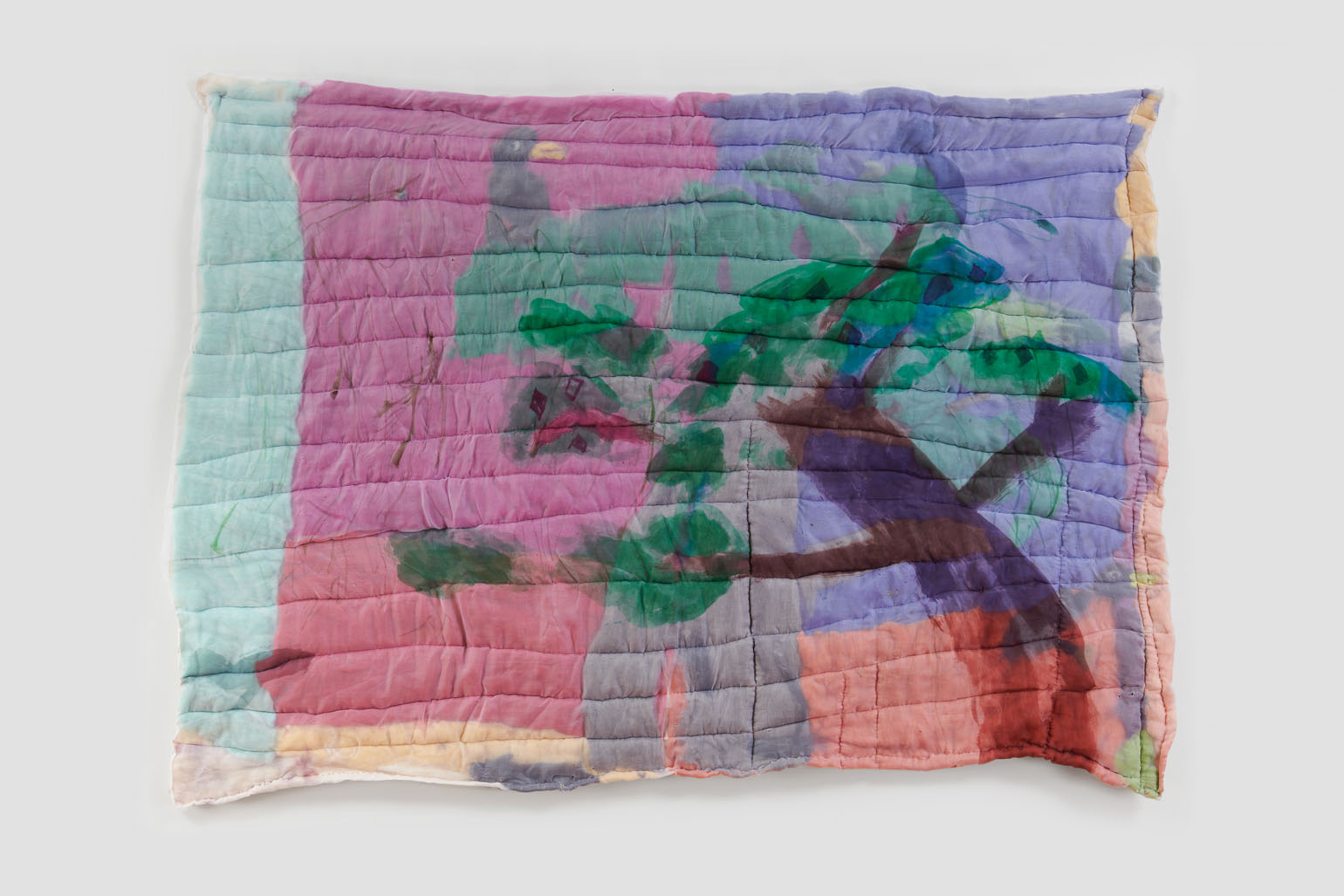
Depression, 2023.
Chance’s wit is on display across the whole show. Upon entering the space, Green Screen (2022–2023) introduces the rest of the work with a bait-and-switch like spirit— emphasizing its own void of content through the playful suggestion of infinite imagery. Black Box (2023), the only other monochrome in the show, further accentuates these quilts’ status as records of nothing. A more allegorical reading of Black Box leads to a similar conclusion: by making their insides visible from the outside, in a sense the quilts have nothing left to reveal.
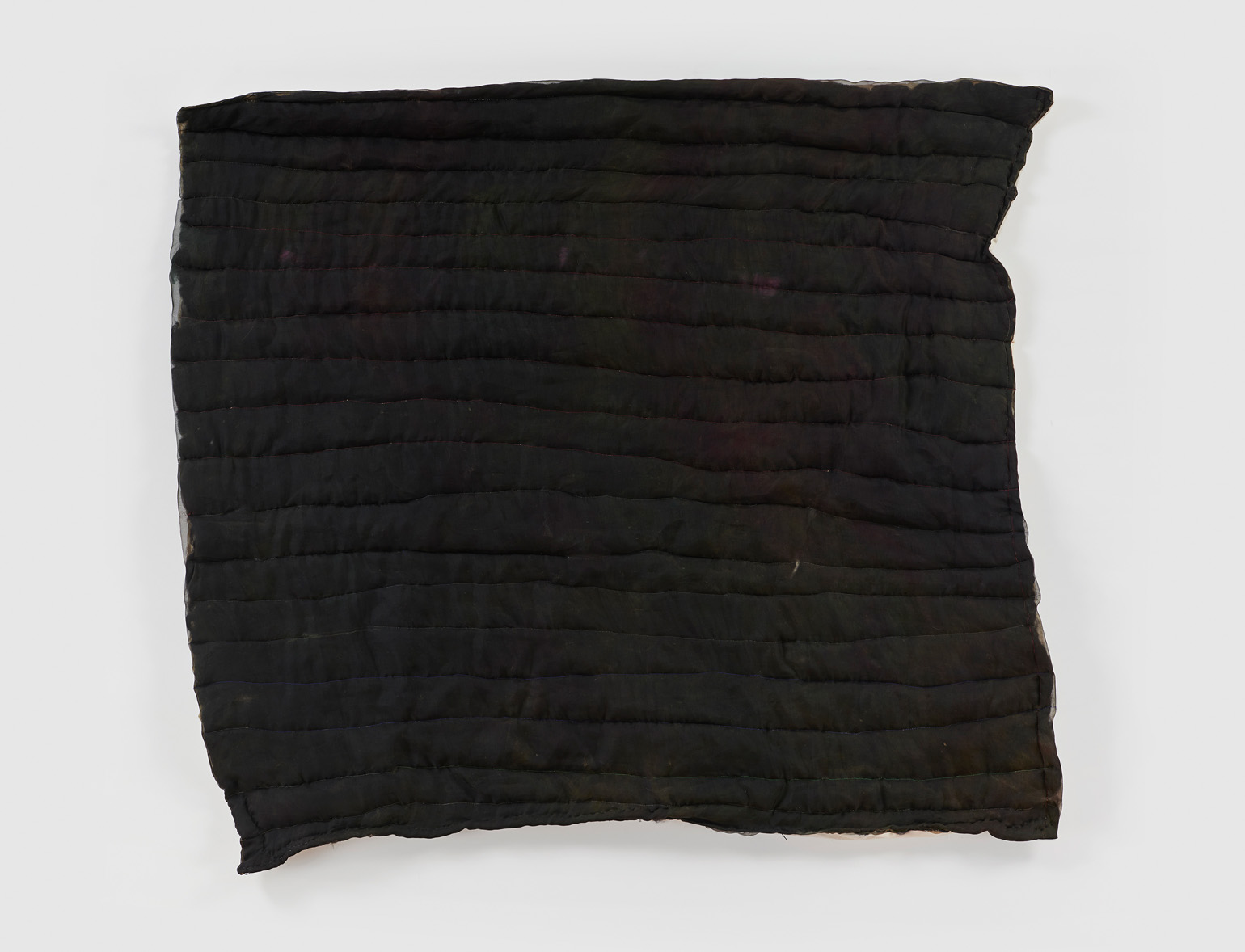
Black Box, 2023.
What’s so special about this inversion is that, by showcasing the batting—the part of the quilt providing thermal insulation that is normally out of sight, Chance highlights the obsolescence at play in his work. Any one of his quilts will cradle you in its beauty, but not one will keep you warm.